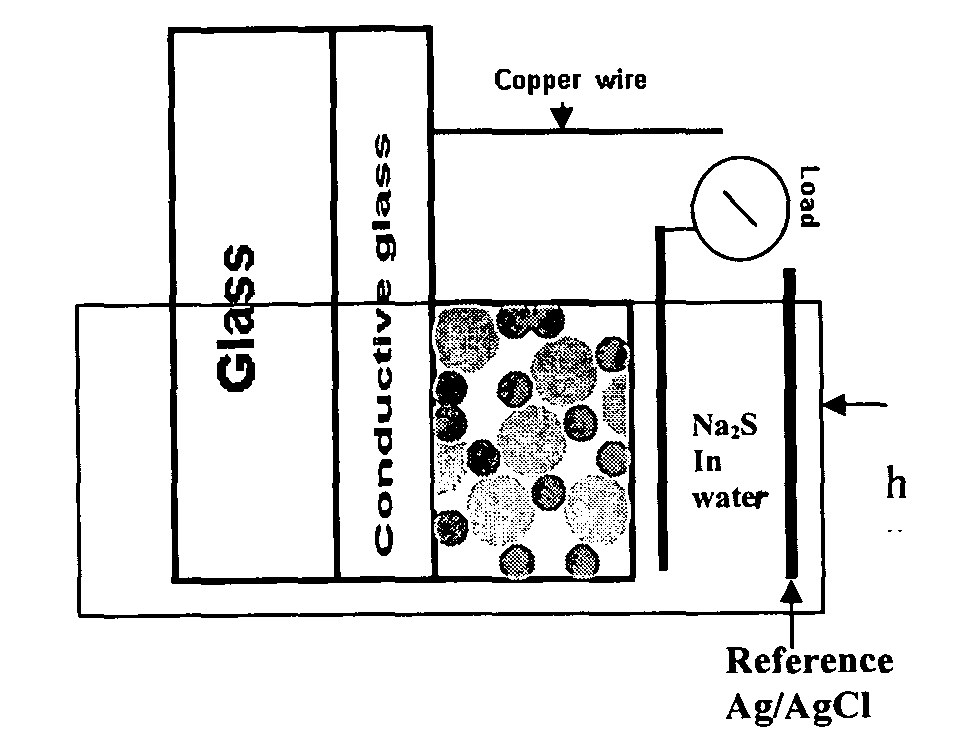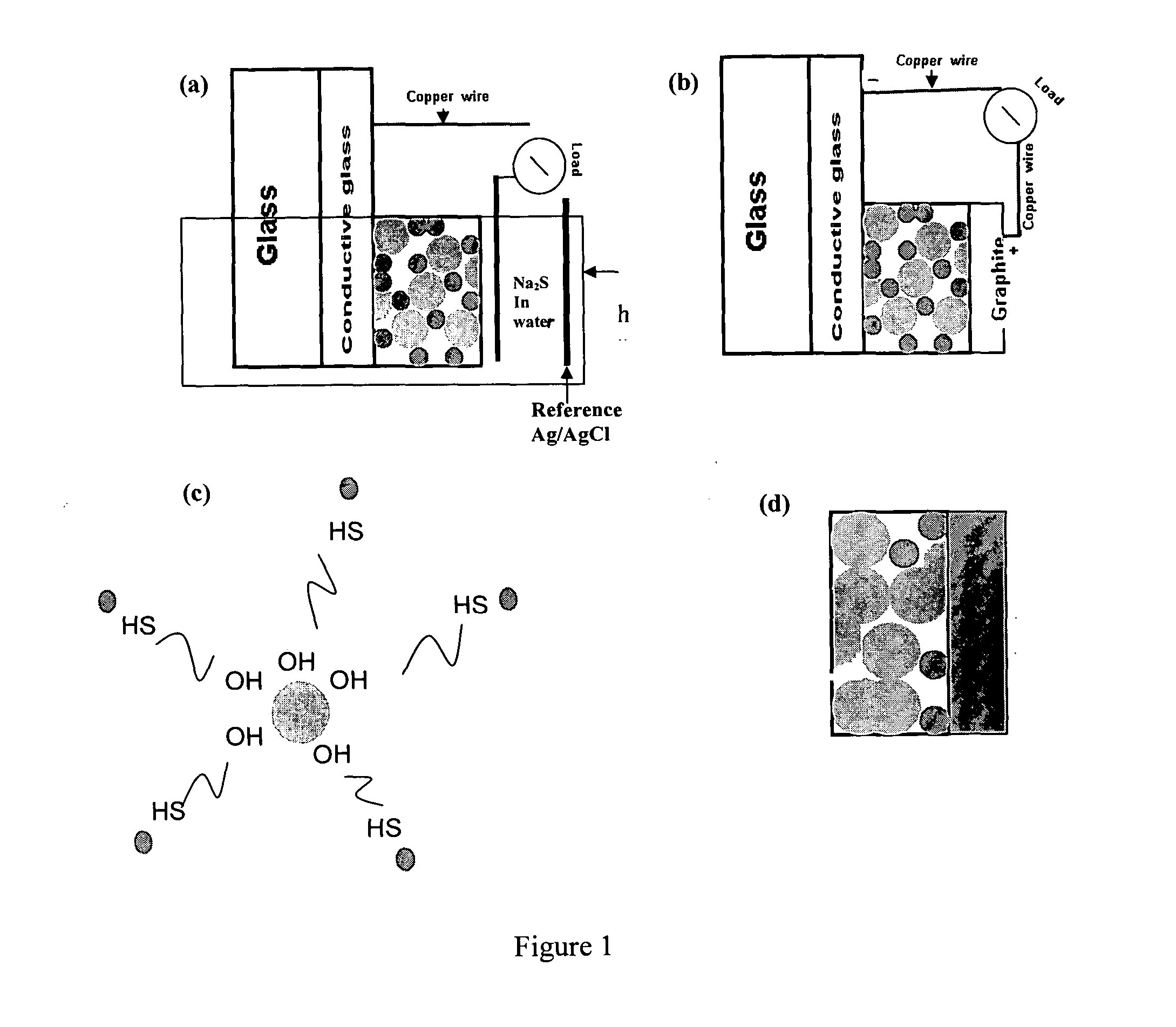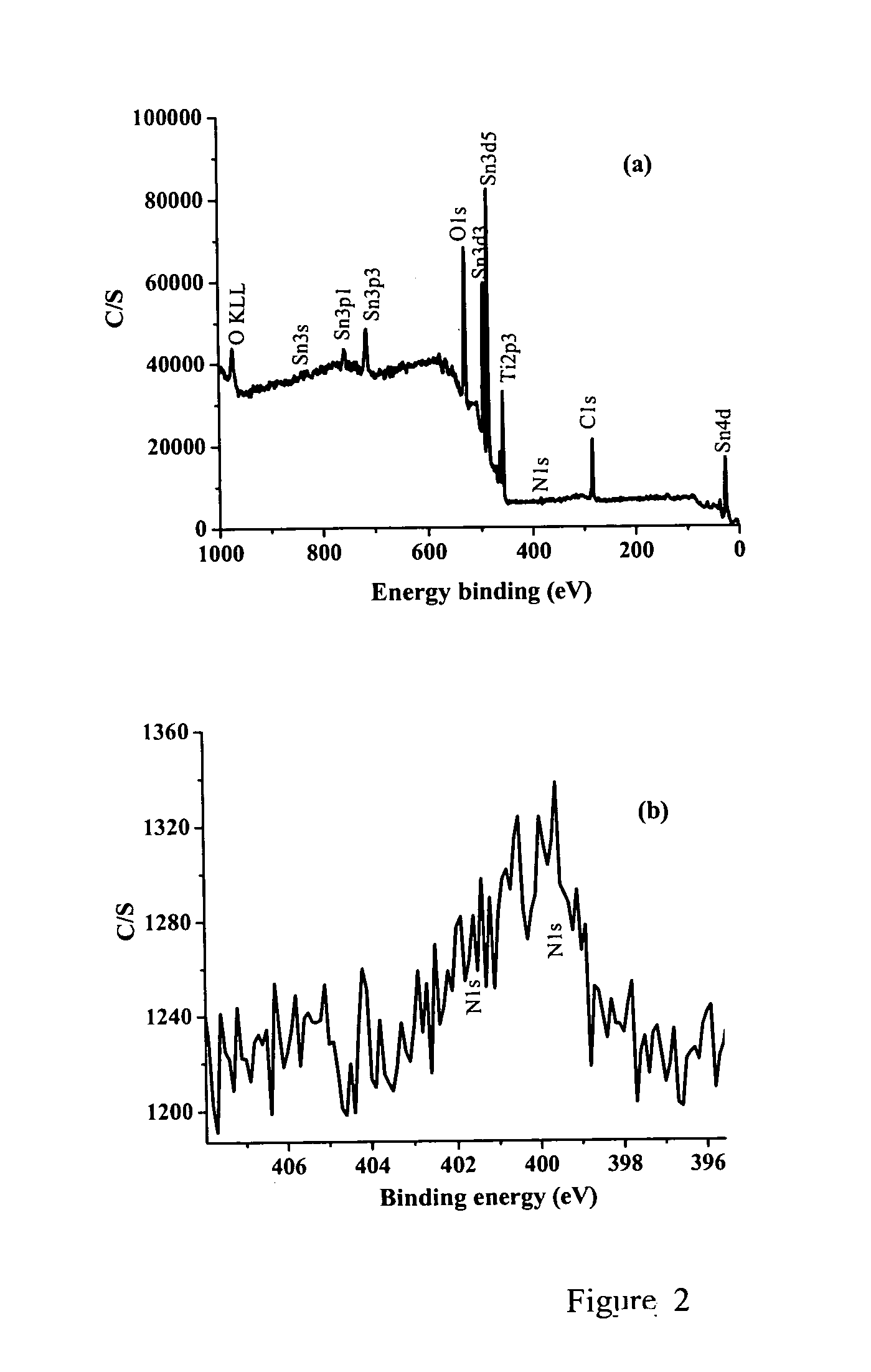Compositions and methods for synthesis of hydrogen fuel
a hydrogen fuel and synthesis technology, applied in the field of hydrogen fuel compositions and methods, can solve the problems of poor conversion efficiency in solar cell applications, high cost of the manufacturing process, and inability to achieve similar attention to the brookite phase,
- Summary
- Abstract
- Description
- Claims
- Application Information
AI Technical Summary
Benefits of technology
Problems solved by technology
Method used
Image
Examples
example i
Experimental Sample Preparation
A. Materials.
[0061]Titanium(IV) iso-propoxide (#377996, 99%), technical grade trioctylphosphine (TOP-#117854, 90%), trioctylphosphine oxide (TOPO #223301, 99%) , potassium chloride (KCl-#204099 , 99%), polyethylene glycol (PEG-#25322-68-3, average Mn ca. 10,000 g / mol) and sodium sulfide (Na2S-#407410, 99%) were obtained from Sigma-Aldrich (Milwaukee, Wis.). Cadmium oxide (CdO-#223791000, 99%) and selenium powder (Se 200 mesh-#198070500, 99%) were obtained from Acros organics (Morris Plains, N.J.). 1-tetradecylphosphonic acid (TDPA-#4671-75-4, 99%) was obtained from PCI synthesis (Newburyport, Mass.). Nitric acid (2.0N-#LC178502) was purchased from Lab. Chem Inc (Pittsburgh, Pa.). Thioglycolic acid (TGA-#103036, 98%) was obtained from MP Biomedicals Inc.(Solon, Ohio). F:SnO2 conductive glass (Tec glass 30 Ohms) was obtained from Hartford glass (Hartford City, Ind.) and the reference electrodes Ag / AgCl from CH Instruments Inc. (Austin, Tex.).
B. TiO2 Film...
example ii
Structural and Morphology Characterization
[0065]X-ray photoelectron spectroscopy (XPS) studies of the films were carried out on an X-ray photoelectron spectrometer (XPS, PHI Quantera SXM) using a non-monochromatized Al KR X-ray source (1486.6 eV). The energy resolution of the spectrometer was set at 0.5 eV. The binding energy was calibrated using a C 1s (284.6 eV) spectrum of a hydrocarbon that remained in the XPS analysis chamber as a contaminant. Crystalline phase identification was performed via X-ray diffraction (XRD) in conjunction with Raman spectroscopy. XRD analysis was conducted on a MINIFLEX diffractometer operating at 30 kV / 15 mA using Cu—Kα radiation and scanning speed of 1° 2θ / min.
[0066]Raman spectroscopy of the films was performed using a Renishaw micro-Raman setup with a (5 / 10 / 20 / 50)× objective lens and a 633 nm excitation wavelength. Renishaw's WiRE (Windows based Raman Environment) was used for collection and data analysis of 1 to 5 scans ranging in accumulations...
example iii
Optical and Electrochemical Characterization
[0069]UV-visible light (UV-vis) absorption spectroscopy was conducted on a Hewlett-Packard 8452A diode array spectrophotometer. UV-vis absorption spectra were measured first by placing a blank FTO glass substrate in the light path, subtracting the absorption pattern, and then performing the UV-VIS absorption measurement on the variety of TiO2 thin films.
[0070]Photoluminescence (PL) spectroscopy was gathered on a Perkin Elmer LS 50B with an excitation wavelength of 390 nm and 1% attenuator. QDs in toluene were placed in an open sided 1 cm path length quartz cuvette for both UV-vis absorption and PL measurements. Thin films were placed in a thin film sample holder from Perkin Elmer (#52123130) for PL spectra.
[0071]Photoelectrochemical studies (linear sweep voltammetry and incident photon-to-current conversion efficiency (IPCE) in solid state and in electrolyte were carried out with a CHI440 electrochemical workstation (Austin, Tex). Linear s...
PUM
| Property | Measurement | Unit |
|---|---|---|
| quantum efficiency | aaaaa | aaaaa |
| thickness | aaaaa | aaaaa |
| particle size | aaaaa | aaaaa |
Abstract
Description
Claims
Application Information
 Login to View More
Login to View More - R&D
- Intellectual Property
- Life Sciences
- Materials
- Tech Scout
- Unparalleled Data Quality
- Higher Quality Content
- 60% Fewer Hallucinations
Browse by: Latest US Patents, China's latest patents, Technical Efficacy Thesaurus, Application Domain, Technology Topic, Popular Technical Reports.
© 2025 PatSnap. All rights reserved.Legal|Privacy policy|Modern Slavery Act Transparency Statement|Sitemap|About US| Contact US: help@patsnap.com



